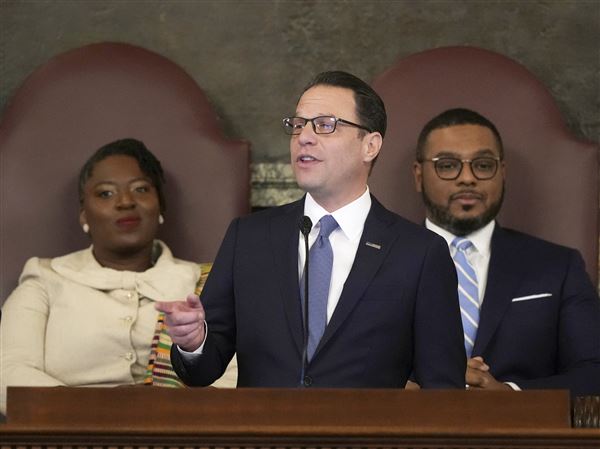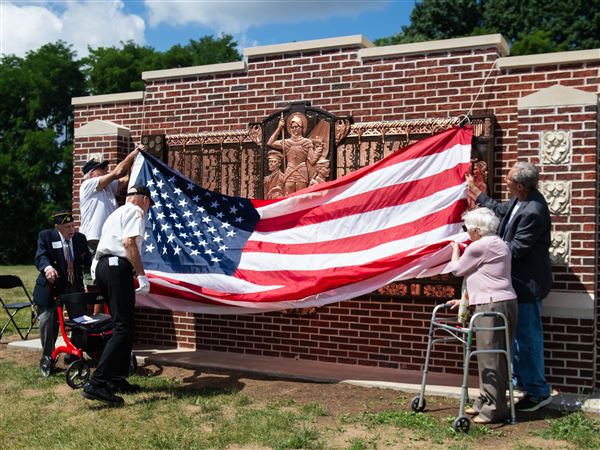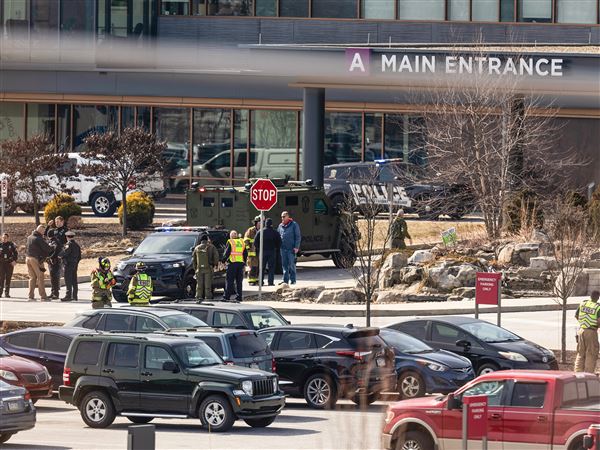My mother said there were no stories in the newspapers when her father died in December 1941. He was just a common man, she said.
I had no reason to doubt her.
But I couldn't resist checking when a few months ago I learned that dozens of newspaper archives are available through Google. Within minutes I was scanning 67-year-old pages of the Post-Gazette from my home in Tampa.
And there it was: "Motorman Dies In Car."
The 45-word brief was near the bottom of an inside page. It reported that motorman William Diggin died of a heart attack the previous day after stopping his trolley at the corner of Third Avenue and Ferry (now Stanwix) Street, near the entrance of St. Mary of Mercy Church.
"Traffic was tied up for nearly 15 minutes," the story said.
The brief was tucked amid bold headlines about the expanding world war and news that Joe DiMaggio was athlete of the year for his 56-game hitting streak that summer.
An archive search through Carnegie Library revealed similar same-day stories about my grandfather in the afternoon Pittsburgh Press and Pittsburgh Sun-Telegraph, which are not available online.
Who could blame my mother for not noticing the coverage? She was 11 at the time, one of six daughters. Her father's death was 10 days after Pearl Harbor and eight days before Christmas.
"We thought the world was coming to an end," she said.
My heart sank a little reading the brief because as a reporter I've written dozens of similar items about the abrupt public deaths of men and women not usually in the news. Get a few details in the paper, but keep it short.
You always know there's more to people's lives than the circumstances of their death.
My grandfather died a month before his 48th birthday and nearly 18 years before I was born. I never thought much about him growing up. But finding the clips inspired me to learn more about the man.
I tracked down records of his 1894 birth in Ireland and his 1913 immigration to Pittsburgh. I found his naturalization papers from 1922 and his marriage record from 1924. I got details of the house he bought in 1925 for $13,000 and paid off in 1936.
I obtained the police and coroner's reports of his death. I learned his uniform badge number and the number of the trolley car he was operating.
My grandfather's younger brother wrote in a statement for the coroner that William had "been in good health all his life and had never complained of any illness." He wrote that William recently had been examined by a Pittsburgh Railways Co. doctor and was "pronounced in good health."
The Roman Catholic Diocese of Pittsburgh supplied a sacramental record that confirmed a family story that a priest administered last rites in front of St. Mary's Church. A notation said "suddenly."
I reviewed the Pittsburgh Railways archives at the University of Pittsburgh and visited the Pennsylvania Trolley Museum. Neither had anything specific about my grandfather, but I did learn more about the company he worked for. I also stepped aboard a restored version of the 1920s-era trolley of his last trip.
My mother and her four surviving sisters said their father was a quiet man who let his wife be the family disciplinarian. He helped the girls with their school work and took them for walks along Second Avenue in Hazelwood, then a bustling strip.
I wanted to hear William Diggin's voice. What had he done for work his first years in America? What were his views on Irish independence and the partition of the island? What did he think of FDR's efforts to deal with the economic woes of the day?
I asked family members in Pittsburgh and relatives Ireland to check for letters or diaries. There seemed to be none.
I visited my grandfather's grave at Calvary Cemetery. I was struck by the 42-year gap between his death and the passing of his wife; the grandmother whose Irish brogue and laughter I had enjoyed.
On a cold December morning I re-traced the old 57 Glenwood trolley route from Hazelwood. "Pittsburgh Railways Company" remains etched on the red-brick former car barn on Second Avenue, now a senior center. I drove toward town, past vacant land that once was the Jones & Laughlin mill.
At the bottom of Third, I visited St. Mary's Church, the only building still in place from 1941. Outside, people were rushing in the chill. Inside, I lit a votive candle in remembrance of William Diggin.
I had found most records of my grandfather at my finger tips or through easy requests. I had covered some of the same ground as him and talked with his daughters. Like most genealogy, it made for an interesting project; but it was no substitute for the opportunity to meet the man.
That's something Google can't arrange.
First Published: January 4, 2009, 10:00 a.m.
















